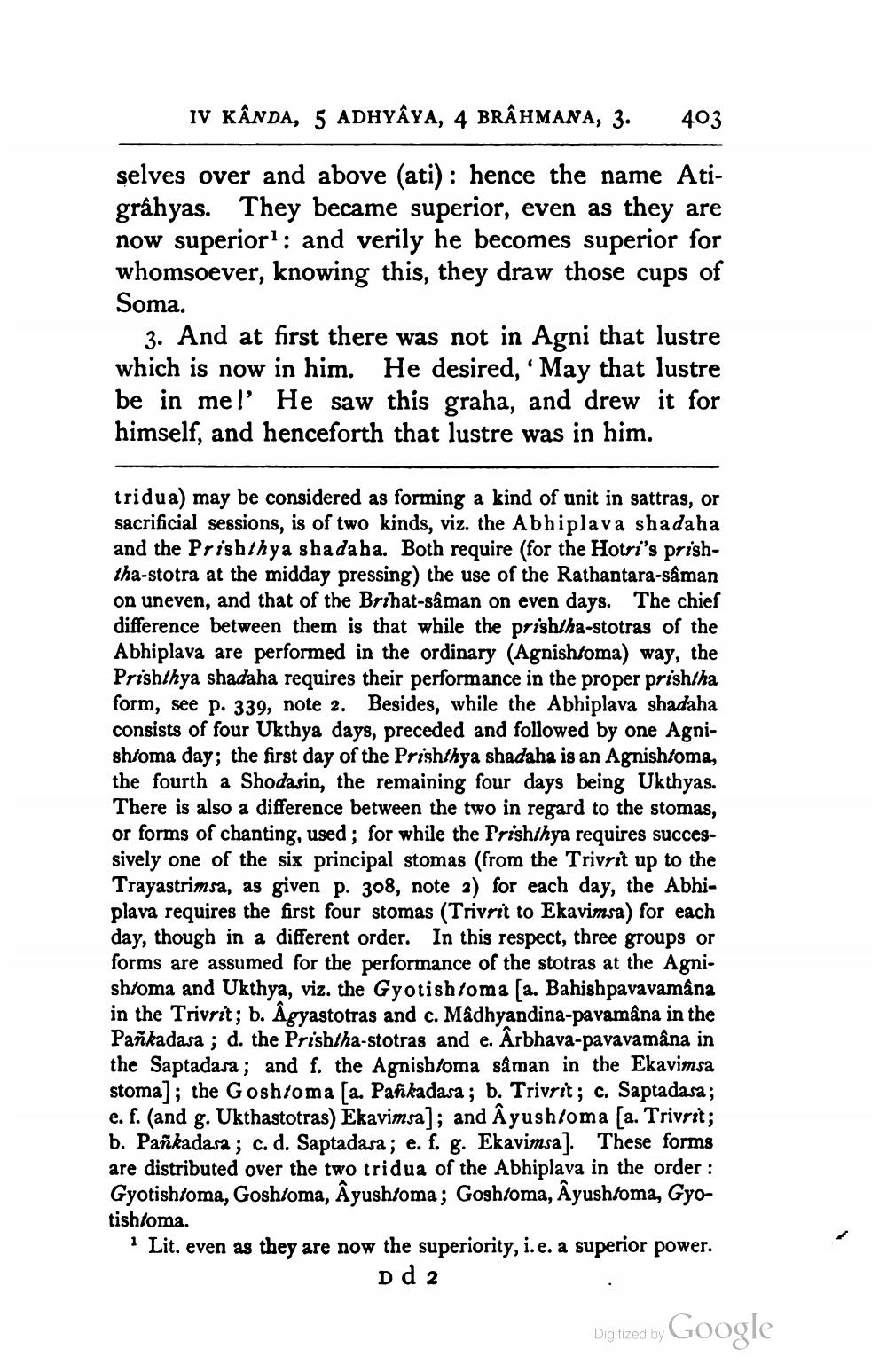________________
IV KÂNDA, 5 ADHYAYA, 4 BRAHMANA, 3.
403
selves over and above (ati): hence the name Atigråhyas. They became superior, even as they are now superior?: and verily he becomes superior for whomsoever, knowing this, they draw those cups of Soma.
3. And at first there was not in Agni that lustre which is now in him. He desired, 'May that lustre be in me!' He saw this graha, and drew it for himself, and henceforth that lustre was in him.
tridua) may be considered as forming a kind of unit in sattras, or sacrificial sessions, is of two kinds, viz. the Abhiplava sha daha and the Prishthya sha daha. Both require (for the Hotri's prishtha-stotra at the midday pressing) the use of the Rathantara-saman on uneven, and that of the Brihat-sâman on even days. The chief difference between them is that while the prishtha-stotras of the Abhiplava are performed in the ordinary (Agnishtoma) way, the Prishthya shadaha requires their performance in the proper prishtha form, see p. 339, note 2. Besides, while the Abhiplava shadaha consists of four Ukthya days, preceded and followed by one Agnishtoma day; the first day of the Prishthya shadaha is an Agnishtoma, the fourth a Shodasin, the remaining four days being Ukthyas. There is also a difference between the two in regard to the stomas, or forms of chanting, used; for while the Prishthya requires successively one of the six principal stomas (from the Trivrit up to the Trayastrimsa, as given p. 308, note a) for each day, the Abhiplava requires the first four stomas (Trivrit to Ekavimsa) for each day, though in a different order. In this respect, three groups or forms are assumed for the performance of the stotras at the Agnishtoma and Ukthya, viz. the Gyotish toma (a. Bahishpavavamâna in the Trivrit; b. Âgyastotras and c. Madhyandina-pavamâna in the Pankadasa ; d. the Prishtha-stotras and e. Arbhava-pavavamâna in the Saptadasa; and f. the Agnishtoma saman in the Ekavimsa stoma); the Goshtoma [a. Pañkadasa; b. Trivrit; c. Saptadasa; e. f. (and g. Ukthastotras) Ekavimsa); and Ayushtoma [a. Trivrit; b. Pañkadasa ; c. d. Saptadasa; e. f. g. Ekavimsa]. These forms are distributed over the two tridua of the Abhiplava in the order : Gyotishtoma, Goshtoma, Ayushtoma; Goshtoma, Ayushtoma, Gyotishtoma. · Lit. even as they are now the superiority, i.e. a superior power.
dd 2
Digitized by Google




